There was little reason to imagine that the inflatable frogs would become an actual thing. Protests at the ICE detention center in Portland, Oregon, in recent months have reflected the city’s penchant for whimsy and weirdness, and tactics such as naked bike riding, organized public knitting and “ICE fishing” with doughnut have largely remained a local affair.
But when a federal agent in riot gear ran up behind a protester wearing an inflatable frog costume and sprayed a chemical agent directly into his costume’s air vent with all the casual menace of an exterminator, the inflatable frog went viral. “I’ve definitely had spicier tamales,” the 24-year-old protester, Seth Todd, told the Oregonian, cementing the frog’s status as a leftist folk hero.
Soon, activists had launched “Operation Inflation” to equip Portland protesters with an entire menagerie of inflatable animal suits, and the costumes began appearing at other protest hotspots, including the ICE detention center near Chicago where police have deployed teargas, pepper balls and batons against protesters in recent weeks. By the time millions of Americans took to the streets in last weekend’s No Kings marches, inflatable costumes were ubiquitous.
“I obviously started a movement of people showing up looking ridiculous, which is the exact point,” Todd said. “To show how the narrative that is being pushed [that] we are violent extremists is completely ridiculous.”
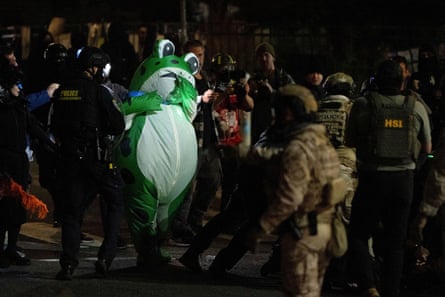
Move over pussy hats. Step aside safety pins. The resistance 2.0 has a new visual language, and this time it’s polyester, battery-powered and full of hot air. The colorful costumes lent a festive air to the No Kings protests and offered an implicit rebuke to the Trump administration’s attempt to smear his political opponents as violent terrorists.
“Frivolity and absurdity are kryptonite to authoritarians who project the stern father archetype to their followers,” wrote author Gary Shteyngart in a New York Times op-ed celebrating the profusion of playful and joyful imagery at Saturday’s marches. “Once the pants are lowered and the undies of the despot are glimpsed, there is no point of return.”
It’s a lovely idea, but nine months into the second Trump administration, it’s hard to argue that Americans have yet to catch sight of the president’s dirty laundry. Kryptonite, like the emperor’s new clothes, is just a fairytale. As Americans seek to harness the energy of No Kings and direct it toward building an effective opposition to Trump’s authoritarian agenda, it’s worth considering what the inflatable costumes are actually saying.
Street protest movements have many aims and many outcomes, but one of the most important is the production of imagery that conveys a message and outlasts the event itself. Activists are keenly aware of symbolism and optics – they aren’t called “demonstrations” for nothing – and often work to imbue protest aesthetics with their particular ideological and ethical commitments.
Nonviolent resistance movements tend to adopt aesthetics that emphasize the inherent dignity and humble humanity of their members. From the Sunday best donned by marchers in the US civil rights movement to the simple dhoti worn by Gandhi and the modest white dress shirt and black slacks of the Tiananmen Square Tank Man, aesthetic choices by peaceful protesters are an effective way of manufacturing imagery that, by contrast, illustrates the sadism and brutality of an oppressive state.
The rejection of respectability politics by subsequent generations of Black liberation activists in the US – from the Black Panther party to Black Lives Matter – reflected not just an aesthetic but also an ideological shift. The Panthers were not seeking equality within a white supremacist system, but a revolution of the system itself; their signature berets, black leather jackets and firearms asserted their militancy and tied them visually to other leftwing revolutionary movements around the world.
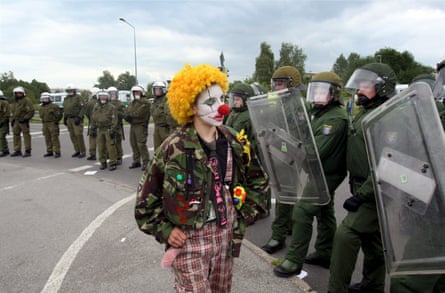
Rebel clowning or “tactical frivolity” represents a another aesthetic tradition of protest, one that deploys humor and buffoonery to pierce the aura of invincibility relied on by despots and dictators. From Charlie Chaplin’s lampooning of Adolf Hitler in the 1940 film The Great Dictator to the Clandestine Insurgent Rebel Clown Army (Circa) protests against globalization and capitalism in the early 2000s, clowning has a storied history within leftwing and antifascist resistance movements.
“The clown puts their absurd body in the way of the harm of others. It is politically more expensive to club a clown!” wrote performance artist LM Bogad in a 2020 essay about his experience with Circa. Confrontations between clowns and riot police create what Bogad calls “irresistible images” – “images that are so compelling that our ideological opponents cannot help but reproduce them even though they undermine their worldview and support ours”.
Portland’s inflatable frogs fit squarely into this tradition, co-opting and subverting the aesthetic of intentional cruelty that has been so assiduously cultivated by the second Trump administration. Maga’s exaggeratedly sculpted faces and glorification of human misery convey the underlying ethos of the Trumpist worldview: beauty is pain, and pain beauty. When Donald Trump conjures up a false image of Portland as “war-ravaged” and “under siege” by antifa “terrorists”, he asks his supporters to embrace the cleansing power of state violence. But when federal agents and riot cops are forced to carry out their attacks on inflatable cartoon characters rather than figures clad in the all-black uniform of recent iterations of antifascist activism, government forces are enlisted in the project of debunking their own lies.
But there is a difference between facing down a riot cop outside an ICE detention center, and dancing in the streets during a permitted march on a sunny Saturday morning. When a Vietnam war protester placed flowers down the barrels of rifles wielded by military police at the 1967 march on the Pentagon, or when anti-occupation activists clucked like chickens before IDF soldiers in the West Bank, they clowned in the face of real danger. Without the implicit threat of state violence, without the bravery of offering up a comically unprotected body as a target for real violence, tactical frivolity can devolve into little more than entertainment.
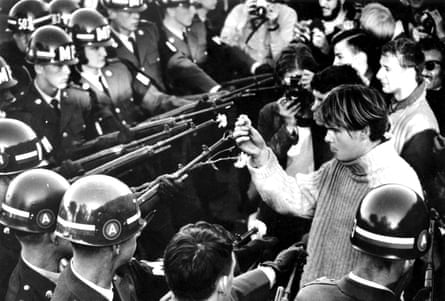
There are very good reasons to hold family friendly protests away from the threat of riot cops, but different contexts require different tactics; what is ridiculously effective in front of an ICE detention center can end up looking just a bit ridiculous when there is no danger in the frame.
Already, one mainstream media outlet has published an affiliate link-laden article promoting cheap inflatable costumes on Amazon: “You too can join in on the movement today with this steeply discounted inflatable elephant costume that’s less than $20 – a record-low price, according to Amazon.” Similarly, the aesthetics of the flower power movement were adopted and commodified by the fashion industry over and over again, losing political potency along the way. The revolution may well end up being televised, but it is sure as hell not going to arrive in a cardboard box with free shipping from Amazon Prime.
It is also worth keeping in mind that Trump is not a straightforward “stern father” autocrat. While some of his rhetoric and actions invoke violence and terror against disfavored groups, he has also played the role of his own court jester, to great effect. His disinhibited remarks and frequent buffoonery are doing their own work to disarm and discredit his opponents, who have often struggled to convince the broader public of the seriousness of the threat he poses. So while tactical frivolity certainly has the power to deflate the menace of the Department of Homeland Security’s anti-immigrant security apparatus, it is not clear that it has much to offer when confronting Trump directly. After the No Kings protests, the president posted an AI-generated video of himself dumping shit on protesters; it’s impossible to make him look like more of a clown than he already is.
Finally, remember that clowning is a fundamentally de-escalatory tactic. When activists turn rifles into vases and riot cops into zookeepers, they are interrupting the cycle of escalating tension that can turn protests into dangerous confrontations. We absolutely need to de-escalate the violence that is being aimed at immigrants and other disfavored communities by Trump, ICE, DHS and the national guard – but it’s not clear to me that de-escalation is the right tactic for nationwide, popular protests. The Democratic party leadership has overwhelmingly failed to operate as an actual opposition party since Trump’s re-election; they don’t need to calm down, but to wake up.
So please, wear your inflatable frog costume if you plan to use your body to obstruct the workings of Trump’s violent deportation machine: in addition to provoking irresistible images, it might help protect you against teargas and pepper spray. But let us be strategic about deploying tactical frivolity against Trumpism. When millions of people take to the streets to demand that our leaders and institutions stop capitulating, the message should not be mistaken for anything other than deadly serious.

 German (DE)
German (DE)  English (US)
English (US)  Spanish (ES)
Spanish (ES)  French (FR)
French (FR)  Hindi (IN)
Hindi (IN)  Italian (IT)
Italian (IT)  Russian (RU)
Russian (RU)  5 hours ago
5 hours ago




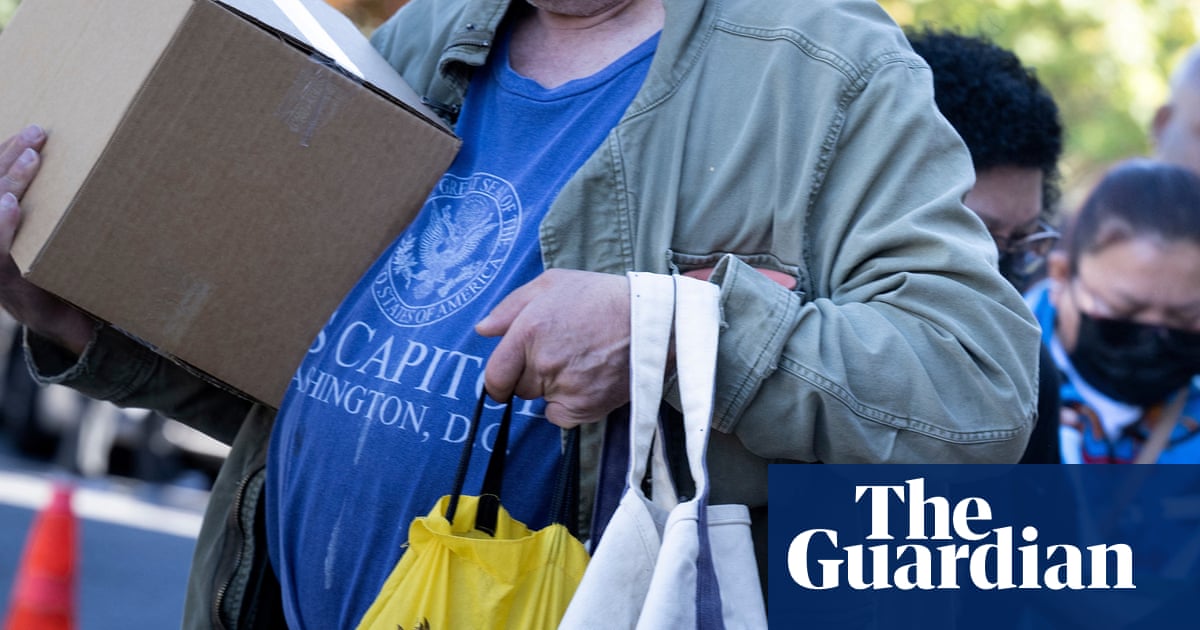









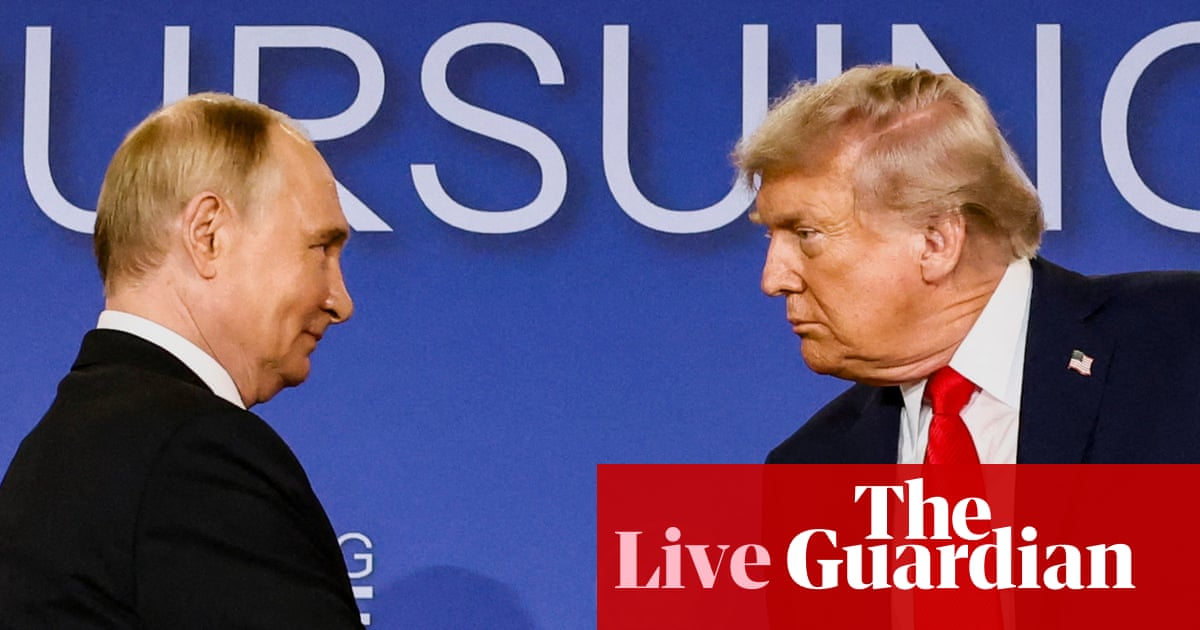
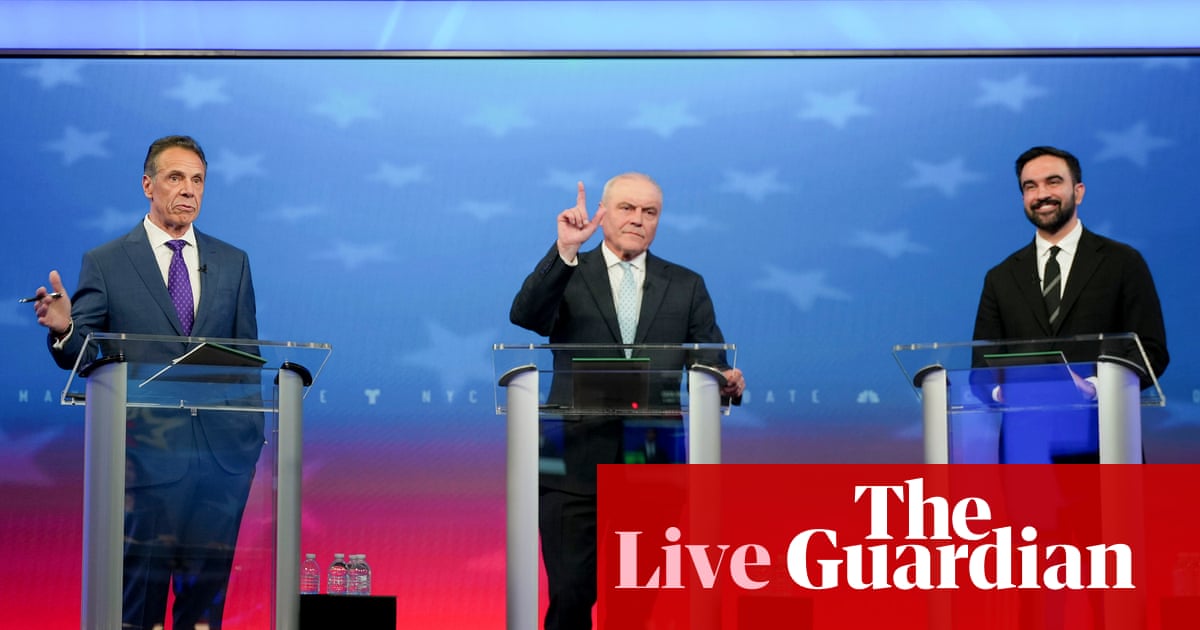








Comments